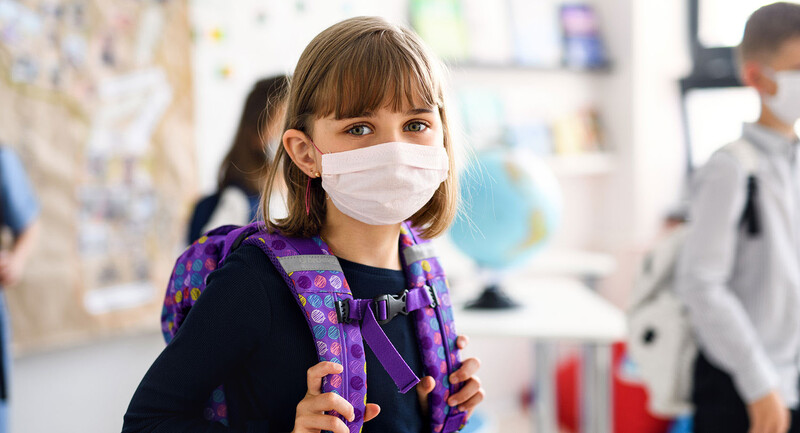Tools and questions to best “recalibrate reentry” and come to school prepared.
As educators and students prepare to reenter school buildings, there will be inevitable challenges—not only around shifting back to yet another setting (even a previously familiar one!), but also around supporting teacher and student mindsets.
Teachers may have one vision of what learning will look like, while students may have another vision. One way to “recalibrate reentry” is to survey students and families on their expectations for the fall and to identify areas of overlap and disagreement.
As you prepare for the year ahead, here are some questions to ask students and families (and to personally reflect on):
● What did you enjoy about remote learning?
● What did you discover about yourself (or your students)—and the way you learn?
● What type of coping strategies benefitted you throughout the year?
● What challenges did you face? How did you overcome or address these challenges?
● What are you most nervous about when considering the return to in-person learning? What are you most excited about?
By taking the time to ask these questions, you will learn more about how your students fared virtually—and what they may want to bring with them into the year ahead.
For example, you may discover that one of your students started the habit of doodling to focus while listening. Without understanding the reason behind it, that doodling could have become a point of contention during in-person instruction. Or, you might learn that a student suddenly works best when lying on the ground. While it might not be feasible to allow that student to work on the floor for the entire class, you could build in some time for students to choose where they work independently. Finally, you could find that a student who excelled when given the opportunity to work at their own pace now struggles by either being bored or rushed when certain tasks are given a set amount of time.
Small insights like these can enable you and your students to better align your visions around what the “new normal” will look like in the fall when we shift back to in-person learning. These insights also open up opportunities to engage students in creative ways that match the new skills they gained from self-directed learning during the pandemic.
Tips for a Smooth Transition
Throughout this past school year, students have had the opportunity to own much of their learning experience. To help students develop these skills further, it is important that educators continue to empower them to have a say in what their education looks like. Here are two keys to making it happen:
- Leverage students' skills from remote learning to build a more flexible and supportive learning experience. As students were thrown into the driver's seat of their own learning, they were tasked with the challenge of working without a teacher in their physical proximity. Students learned firsthand what it means to be self-directed—whether that meant making a to-do list, prioritizing assignments, making choices around what and how they learned, or even knowing how and where to look for help. By being informed, aligned, and transparent about these learnings, teachers and students can better understand each other and what is needed to succeed. This can include offering options for personalization around time, pace, place, and even content so students can continue to develop and employ agency and choice.
- Offer opportunities to continue the conversation and ensure students and families know you are in this together. It is important to build in time to check-in with students, families, and yourself periodically on how the shift back to in-person learning is progressing and where changes could be made. This could mean offering multiple surveys throughout the year, building in time for 1:1 check-ins, hosting family nights, etc. It will be vital to have everyone on the same page, sharing what is needed for success and open to a continued conversation.
This fall will be a challenge for many reasons, as schools assess their return plans and adjust their modalities to support in-person, remote, and hybrid learning. It is important that we, as educators, have access to the right insights and intel to make this transition as smooth as possible for everyone involved.
School Culture Tip
By keeping practices transparent and the lines of communication open among teachers, students, and families, we can take advantage of a wealth of collective knowledge to improve learning experiences, even in times of transition and uncertainty.
We can't afford to operate schools the same way we did before the pandemic. Instead, we should be shepherding in a “new normal” that makes schools more student-centered and personalized.
This year, we have the potential to approach instruction with innovation and creativity. Students and their families will be key to doing that successfully.








